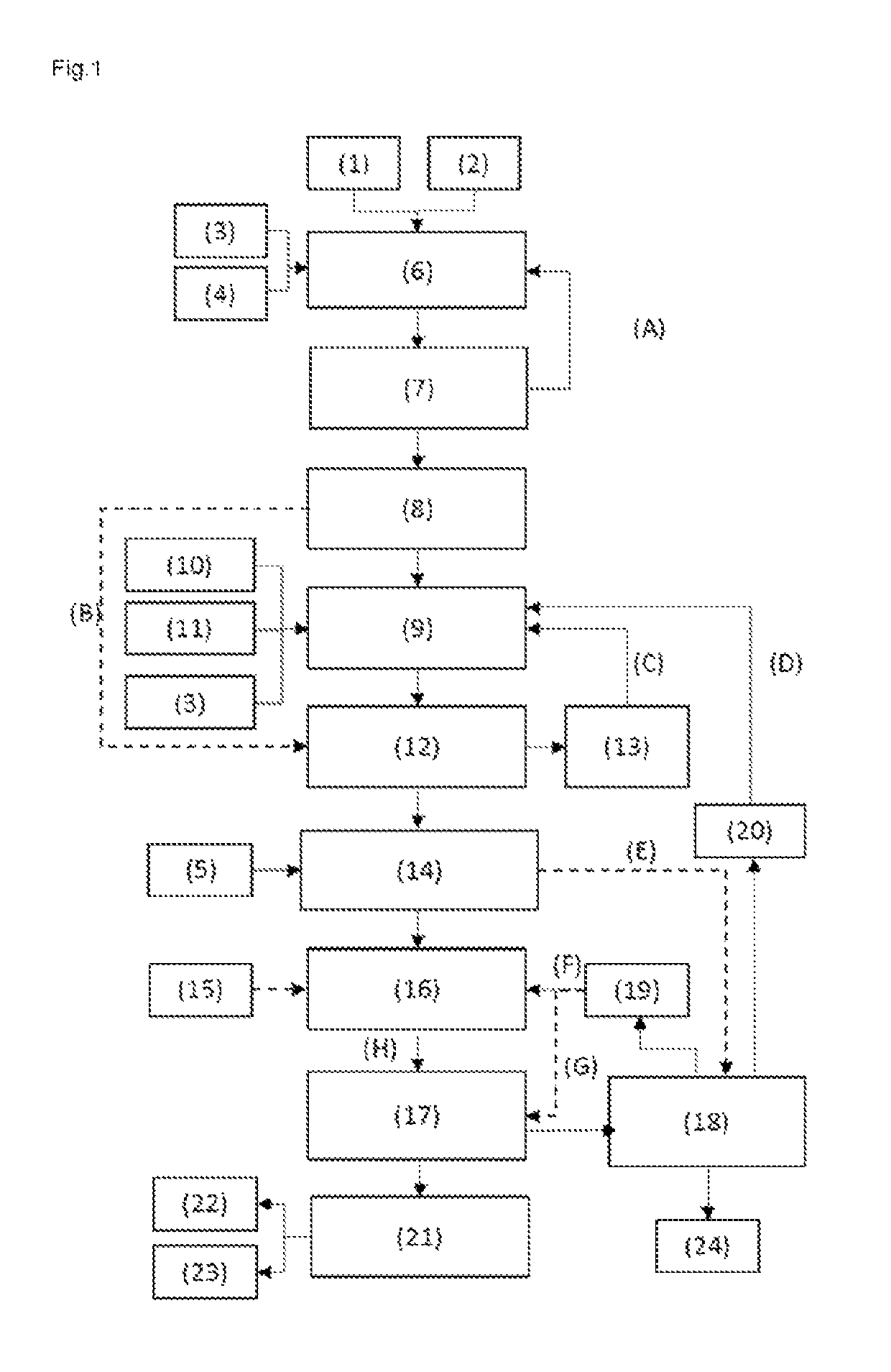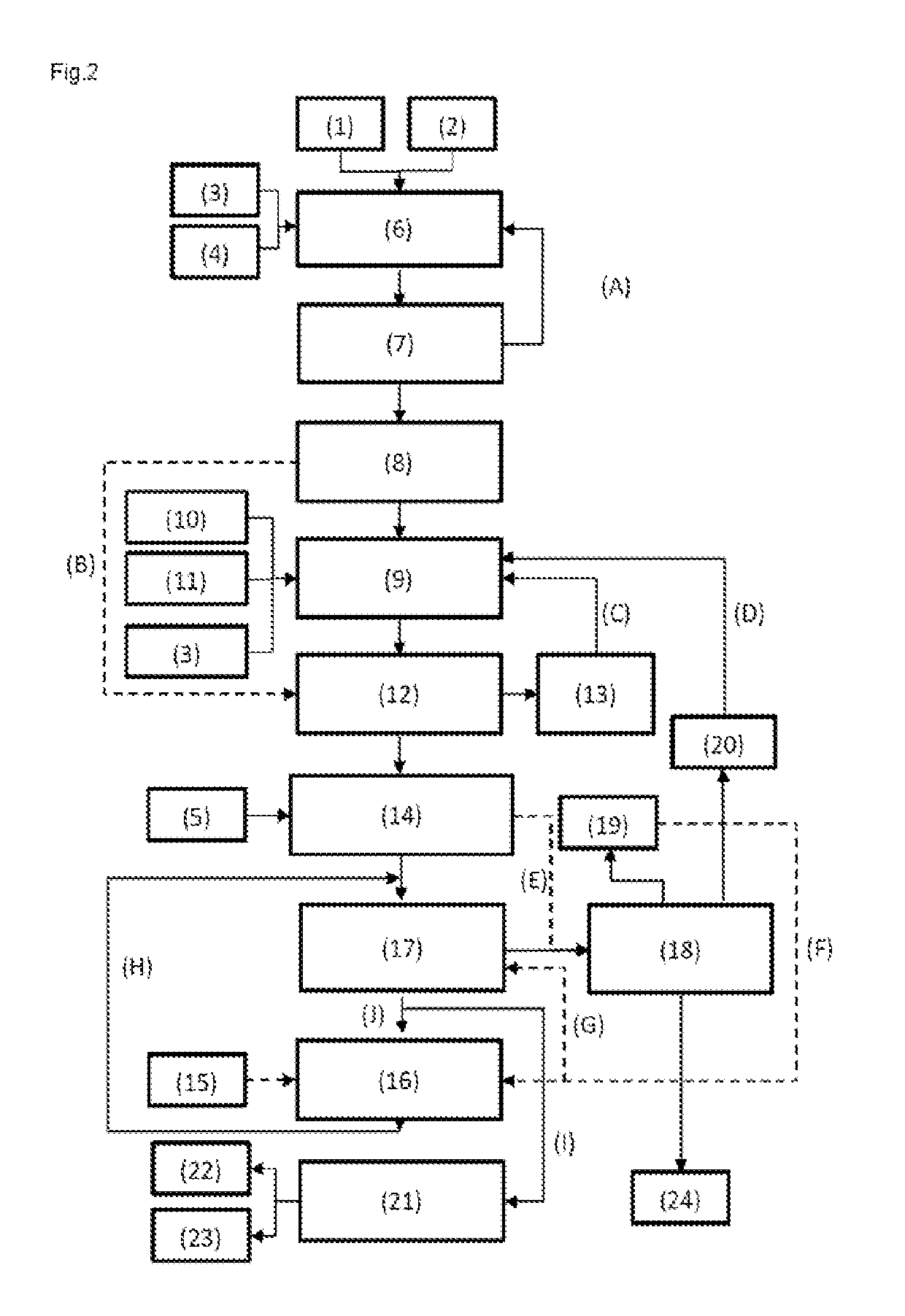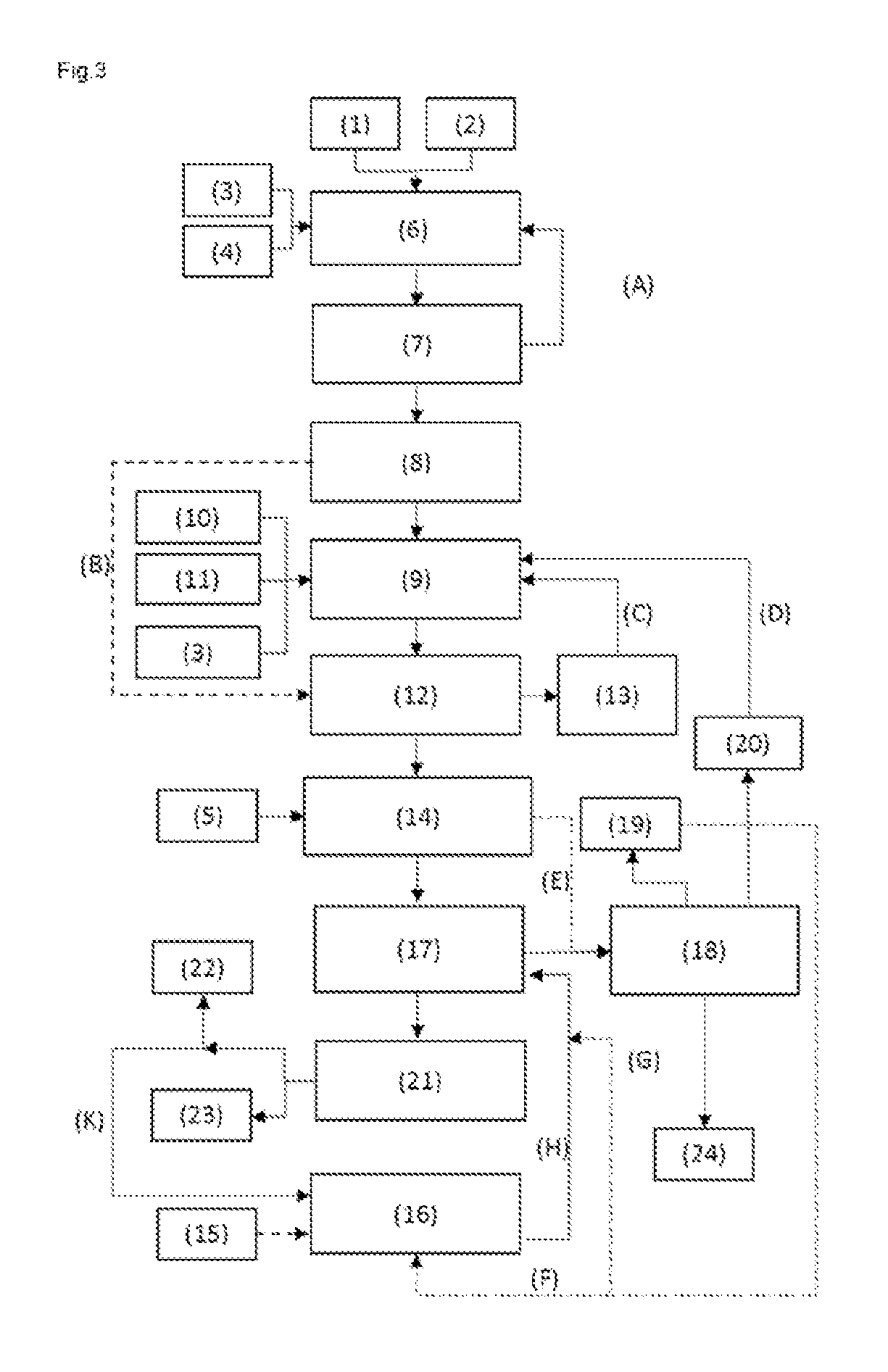Synthesis of methacrylic acid from methacrolein-based alkyl methacrylate
a technology of methacrylate and alkyl methacrylate, which is applied in the field of synthesis of methacrylic acid from methacrolein-based alkyl methacrylate, can solve the problems of large waste of sulphuric acid in the process, low yields viewed overall that are obtained, and large energy expenditure, and achieves small by-product spectrum and is easy to implement on the industrial scale.
- Summary
- Abstract
- Description
- Claims
- Application Information
AI Technical Summary
Benefits of technology
Problems solved by technology
Method used
Image
Examples
example 1
[0076]The total energy consumption of the process for preparing MMA from methacrolein (according to FIG. 1, but without reactor III) was determined and compared with the corresponding values for a process of the invention for preparing MMA and MAA according to FIG. 1 to FIG. 3:
[0077]
TABLE 1EnergyconsumptionMMAMAAMMA eq.[t steam / ExampleProcess[kt / a][kt / a][kt / a]t MMA eq.]Comparative(without14331465.13Examplerct. III)Example 1as per FIG. 1126181444.97Example 2as per FIG. 298431414.90Example 3as per FIG. 399431426.00
[0078]As apparent from Table 1, it is possible in all the inventive working examples to produce relatively high amounts of MAA in addition to MMA. The total energy requirement remains similar to the process without MAA production.
LIST OF REFERENCE NUMERALS
[0079]FIG. 1 shows a process regime according to embodiment 1. This embodiment is configured such that, after operating step e), the further operating steps are conducted in the sequence f), d) and g).
[0080]FIG. 2 shows a p...
PUM
| Property | Measurement | Unit |
|---|---|---|
| pressure | aaaaa | aaaaa |
| temperature | aaaaa | aaaaa |
| temperature | aaaaa | aaaaa |
Abstract
Description
Claims
Application Information
 Login to View More
Login to View More - R&D
- Intellectual Property
- Life Sciences
- Materials
- Tech Scout
- Unparalleled Data Quality
- Higher Quality Content
- 60% Fewer Hallucinations
Browse by: Latest US Patents, China's latest patents, Technical Efficacy Thesaurus, Application Domain, Technology Topic, Popular Technical Reports.
© 2025 PatSnap. All rights reserved.Legal|Privacy policy|Modern Slavery Act Transparency Statement|Sitemap|About US| Contact US: help@patsnap.com



